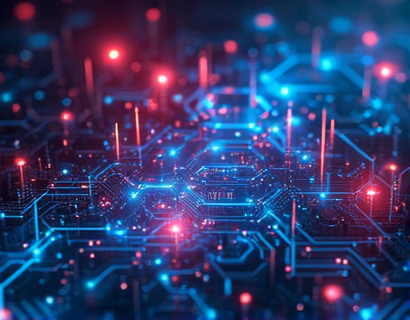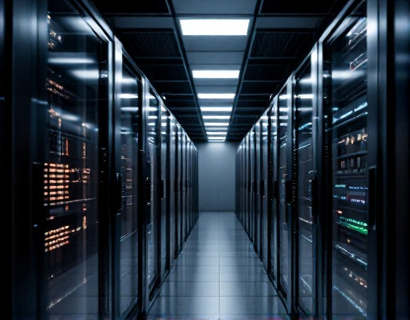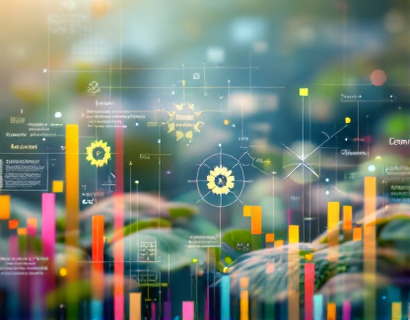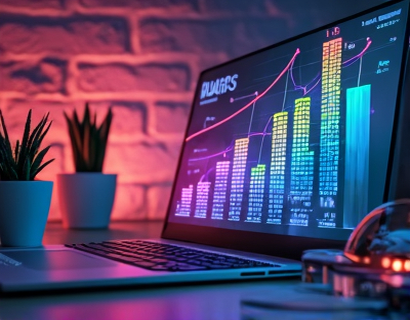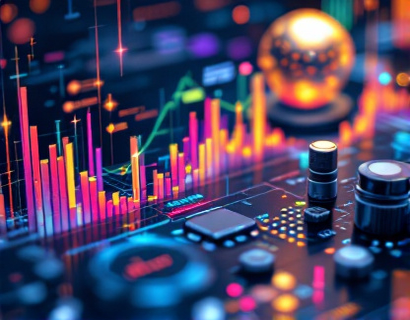AI and Crypto: Pioneering Next-Gen Productivity through Innovative Digital Solutions
The intersection of artificial intelligence (AI) and cryptocurrency is giving rise to a new era of digital innovation, one that promises to revolutionize productivity and redefine app ecosystems. This fusion is not just a technological curiosity but a practical solution for tech-savvy professionals and early adopters seeking to enhance their digital strategies. As we delve into this transformative space, it's essential to understand how AI and cryptocurrency are converging to create more efficient, secure, and innovative digital tools.
The traditional app ecosystem is being reimagined through the integration of AI and blockchain technology. AI brings intelligence, automation, and predictive capabilities to applications, while cryptocurrency provides a decentralized, secure, and transparent method for transactions and data management. Together, they form a powerful synergy that can significantly boost productivity and foster innovation.
Enhanced Security through Blockchain
One of the most compelling aspects of integrating AI with cryptocurrency is the enhanced security it offers. Blockchain technology, the backbone of cryptocurrency, ensures that data transactions are immutable and transparent. This means that once data is recorded on the blockchain, it cannot be altered or deleted, providing a level of security that traditional systems often struggle to match. For businesses and individuals, this translates to greater trust and confidence in digital transactions and data storage.
AI can further augment this security by analyzing patterns and detecting anomalies in real-time. Machine learning algorithms can identify potential security threats before they become issues, allowing for proactive measures to be taken. This combination of blockchain's immutability and AI's predictive analytics creates a robust security framework that is essential in an era where data breaches and cyber threats are increasingly common.
Improved Efficiency through Automation
AI-driven automation is another key area where the fusion of AI and cryptocurrency is making a significant impact. Automation has long been a goal in the tech industry, but traditional methods often fall short due to the complexity and variability of tasks. AI, however, can handle a wide range of tasks with precision and consistency, from data entry and customer service to complex decision-making processes.
In the context of cryptocurrency, smart contracts powered by AI can automate and execute transactions based on predefined conditions. This not only speeds up processes but also reduces the need for intermediaries, lowering costs and increasing efficiency. For instance, in supply chain management, AI can monitor and optimize inventory levels, while smart contracts can automatically trigger payments when certain conditions are met, ensuring a seamless and transparent process.
Personalized User Experiences
The integration of AI and cryptocurrency also opens up new possibilities for personalized user experiences. AI algorithms can analyze user behavior and preferences to provide tailored recommendations and services. In the realm of cryptocurrency, this means that users can receive customized financial advice, investment strategies, and product suggestions based on their unique profiles.
For example, a digital wallet powered by AI can monitor a user's spending habits and suggest ways to save money or invest more effectively. This level of personalization not only enhances user satisfaction but also increases the adoption and utility of cryptocurrency-based solutions. Users are more likely to engage with digital tools that understand and cater to their specific needs.
Decentralized Applications (DApps)
Decentralized applications, or DApps, are a prime example of how AI and cryptocurrency are reshaping the app ecosystem. DApps operate on blockchain networks, leveraging the decentralized nature of cryptocurrency to provide services that are resistant to censorship and control by any single entity. AI enhances DApps by adding intelligent features that improve functionality and user experience.
For instance, AI-powered chatbots can be integrated into DApps to provide 24/7 customer support, handle queries, and guide users through complex processes. These chatbots can learn from user interactions, becoming more efficient and effective over time. Additionally, AI can be used to optimize the performance of DApps, ensuring they run smoothly even under high load conditions.
Tokenization of Assets
Another transformative aspect of the AI and cryptocurrency convergence is the tokenization of assets. Tokenization involves representing real-world assets, such as property, art, or even intellectual property, as digital tokens on a blockchain. This process makes these assets more liquid and accessible, allowing for fractional ownership and easier trading.
AI can play a crucial role in this process by analyzing market trends, assessing asset values, and predicting future performance. This data-driven approach helps investors make more informed decisions and can lead to more efficient and transparent markets. For example, AI can help identify undervalued assets or predict the impact of external factors on asset prices, providing valuable insights to investors.
Enhanced Data Analytics
Data analytics is a critical component of modern digital strategies, and the combination of AI and cryptocurrency takes this to new heights. Blockchain's inherent transparency and AI's advanced analytical capabilities create a powerful tool for data-driven decision-making. Businesses can leverage this synergy to gain deeper insights into customer behavior, market trends, and operational efficiency.
AI can process and analyze large volumes of data from blockchain transactions, identifying patterns and trends that might not be visible through traditional analytics methods. This can lead to more accurate forecasting, better risk management, and more effective marketing strategies. For instance, a retail company can use AI to analyze transaction data from cryptocurrency payments to understand consumer preferences and optimize inventory management.
Challenges and Considerations
While the potential benefits of integrating AI and cryptocurrency are significant, there are also challenges and considerations that need to be addressed. One of the primary concerns is regulatory compliance. The cryptocurrency space is still largely unregulated, and the use of AI adds another layer of complexity. Ensuring that AI-driven solutions comply with existing laws and regulations is crucial to avoid legal issues and maintain user trust.
Another challenge is the technical expertise required to develop and maintain these advanced systems. Both AI and blockchain technology are complex fields that require specialized knowledge. Organizations need to invest in skilled professionals or partner with experts to ensure the successful implementation of AI and cryptocurrency solutions.
Future Outlook
Looking ahead, the fusion of AI and cryptocurrency is poised to continue driving innovation and productivity. As technology advances, we can expect to see even more sophisticated applications and services that leverage the strengths of both domains. The development of more user-friendly interfaces, increased adoption of blockchain in various industries, and advancements in AI algorithms will all contribute to a more integrated and seamless digital experience.
For tech-savvy professionals and early adopters, embracing this convergence offers a competitive edge. By staying at the forefront of these technological trends, they can develop and implement cutting-edge solutions that not only enhance their own productivity but also open up new opportunities in the digital landscape.
In conclusion, the integration of AI and cryptocurrency is not just a technological novelty but a practical and powerful approach to enhancing productivity and innovation. By understanding and leveraging this synergy, businesses and individuals can stay ahead of the curve and thrive in the rapidly evolving digital world.




